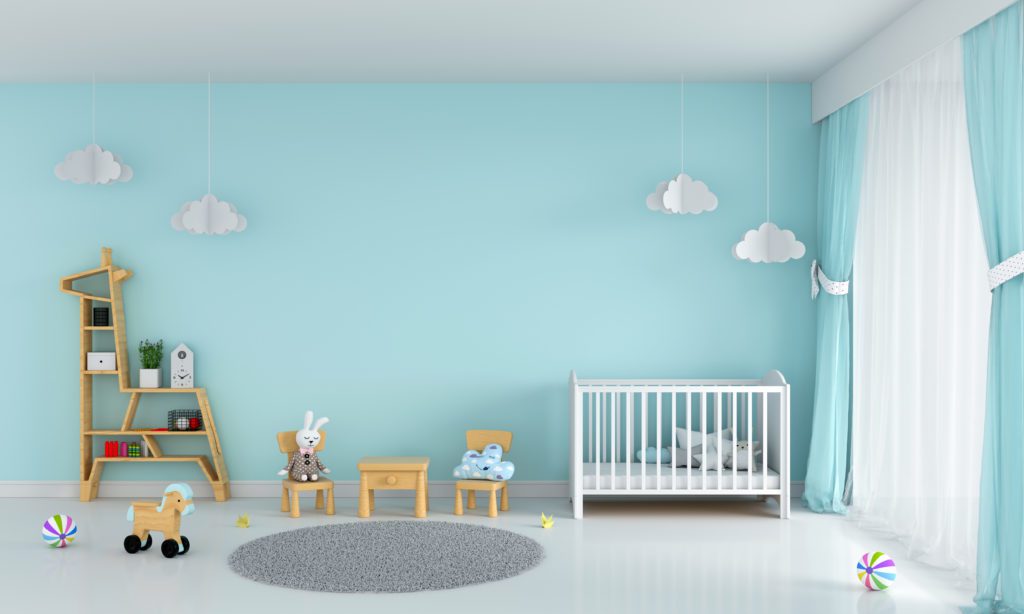
17 Oct 7 Tips for Preparing Your Home for Baby
 We have covered many ‘firsts’ on this blog over the past few years. From first time home buying to preparing your home for a new pet, to getting out of your comfort zone to try a new skill or volunteer effort—so many firsts start at home.
We have covered many ‘firsts’ on this blog over the past few years. From first time home buying to preparing your home for a new pet, to getting out of your comfort zone to try a new skill or volunteer effort—so many firsts start at home.
It is our joy in working in the real estate industry that we help our clients move through life buying and selling those homes that serve as the backdrop for, well, everything.
Now, one week away from the due date of my first child, I am feeling fairly introspective about a significant first right around the corner. As we have been preparing over these ten months (news to me who thought it was supposed to be nine!), I wanted to share some tips we have learned along the way.
1. Like anything else major in life (weddings, renovations, etc.), there is a sliding scale for how much you can do and spend.
Pinterest, Instagram targeted ads, and an entire industry will convince you your nursery must be fully decked out and thematic. It is completely up to you how much you want to do, but it is extremely easy to get carried away. Determine where you want to focus your budget.For us, we wanted to update that side of the house’s electrical system to move from two-prong outlets to three-prongs with a ground wire for increased safety. While we were working on the electrical, we decided to add in recessed can lights and ceiling fans to increase the home’s value in the long term. Since we were cutting into the walls and ceilings, we decided to paint as well – neutral colors that could extend beyond the room’s use as a nursery.
2. Hand me downs and borrowed goods are a lifesaver.
No matter what stage in life you are in when you bring a child into your family, there is likely someone moving out of that stage and interested in offloading some baby goods. Being open to secondhand items can save you literally thousands of dollars. Even borrowed items you will use for just a short season can make a difference. Often, babies only use certain items (like a bassinet) for a short period of time before outgrowing to the next stage.If a friend or co-worker offers to share an item, take them up on it! They may need reminding but would not bring it up to you if they were not serious. If it is an item like a car seat or crib, be sure to ensure it is up to date with ever-changing safety standards.
3. Buy just a few things until you learn your baby’s likes and dislikes.
Apparently, babies have opinions. I do not know yet from personal experience, but I have heard some babies refuse certain kinds of swaddles, eating from specific types of bottles, or even do better in one brand of diapers versus others. Before you go all out on one specific item, consider buying just one or two to see how your baby takes to it.
4. Babies truly need very little. The industry will tell you otherwise, so start with the basics and add on from there.
So many veteran mothers shared this tip with me. Much like the other points I have mentioned, babies are all different and have varying degrees of needs and wants. There is a tendency to stare into the future timeline of your due date like that of a doomsday prepper. But thanks to modern conveniences like grocery store delivery, Amazon Prime, and old standbys like friends and family who are ready to help, anything you need is well within your reach. Start with the basics: a place for baby to safely sleep, diapers/wipes, a few outfits, and some burp cloths. From there, you can play it by ear!
5. Buy diapers throughout your pregnancy. I wish I had done this!
Recently, someone shared a strategy they put into practice of buying diapers whenever they went on sale throughout pregnancy. Diapers are expensive and collecting over time made a lessened hit on the overall budget. That was smart and I wish I had known that before!
6. Consider making changes to the room that can subsist after it is done being used as a nursery.
I touched on this in my first point, but the investments we made in our nursery were made with its life post-children in mind. Avoiding a traditional pink or blue color palette will likely save you money later.
7. Create a safety plan for your home and test all of your protection tools.
This is still very much ongoing, but bringing a new little one into the home is a perfect time to make sure you have safety covered. Consider purchasing an alarm system if you do not yet have one. Test your smoke detectors. Create an action plan in case of fire or any other emergency. Determine your communications protocol with family and friends if something were to occur. Make sure your neighbors know when you go to the hospital if you do not have family in town so they can watch for any suspicious activity while you are not there. Finally, if you have pets at home, make a plan for their care while you are in the hospital.
However you welcome new life into your home, it is your personal choice to make and everyone has opinions. Whether a new puppy, kitten, or baby girl or boy, the key is to pursue what brings harmony and happiness to your family the most. That is what home is all about.
About the Author
Kate Dabbs is the Senior Director of Marketing and Strategic Initiatives at Coldwell Banker Caine. She has a passion for being active and the outdoors. Her hobbies include reading, traveling, cooking with her husband, Dixon, and walking their black lab, Flo.






